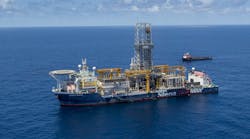By the OGJ Online Staff
HOUSTON, Nov. 27 -- Measures to reduce the environmental impact of a proposed new rail line to serve Powder River basin coal mines in Wyoming could cost its sponsor, the Dakota, Minnesota & Eastern Railroad Corp., up to $140 million.
A panel of the Surface Transportation Board issued the final environmental impact statement for the controversial rail proposal, which included recommendations for 147 environmental mitigation measures. Its release helps clear the way for DM&E's 280 miles of new rail line from the Black Hills of South Dakota into the Powder River Basin. The project was initiated in 1997, part of a projected 1,000-mile construction and rehabilitation program.
The panel said because of the unique circumstances involved in the project, it warranted "more far-reaching and extensive environmental mitigation than the mitigation typically imposed by the board." The report calls for three grade separated crossings, one in Pierre, SD, and two in Rochester, Minn. It also calls for noise mitigation and other measures.
Given the magnitude of the project and the nature of the environmental issues, the STB panel said the likely expenditure of 10% of the $1.4 billion construction cost of the project for mitigation does not appear "unreasonable."
Representatives of the railroad company were not available for comment. The STB board will now consider in its final decision whether to approve, approve with conditions, or disapprove the proposed PRB expansion project. Various state agencies also will issue decisions, based on the environmental impact statement.
DM&E cannot begin construction of its new rail line until the board approves the project and that decision becomes effective. Opponents, including the Coal-Train Train Issues Coalition, claim the project will degrade quality of life in affected communities, impose heavy costs on its neighbors, and is a high-risk venture with no public benefit.
Chuck Linderman, director of energy supply policy for Edison Electric Institute's Alliance of Energy Suppliers said the assessment brings the largest rail project in recent times "one step closer to fruition." He said construction of the new line would increase access to the Powder River basin's low-cost, low-sulfur coal.
Currently, only two rail lines, operated by Union Pacific Corp. and Burlington Northern Santa Fe Corp., extend into the PRB. Linderman said addition of a third line would spur competition among coal shippers, reducing transportation costs by 20-30% and providing greater access to coal that is 40% cheaper than other western sources and 75% cheaper than eastern coal.
Since demand for Powder River basin coal is expected to increase if the project is approved, EEI estimated that PRB coal would displace 87 million tons of bituminous coal by 2010, reducing sulfur dioxide emissions by roughly 420,000 tons/year over this period.
He also noted the DM&E would provide a more direct route east to the upper Midwest and Mississippi River. The line also would help mitigate rail capacity shortages and service failures that have halted rail traffic during periods of critical need in the past, he said.
